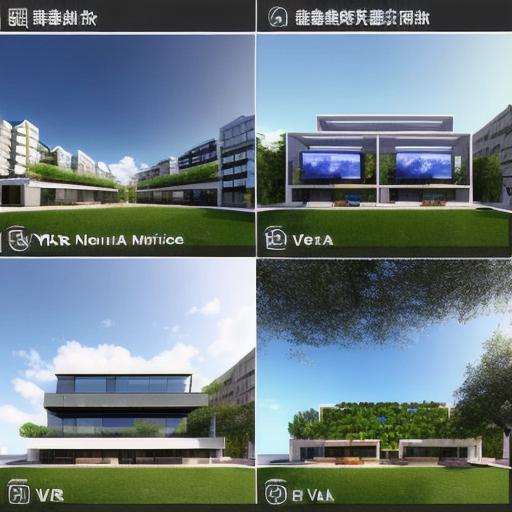Subheading 1: Understanding the Basics of the Metaverse and Virtual Reality
First, let’s clarify some terms. The metaverse is a collective virtual shared space, created by the convergence of virtually enhanced physical reality and physically persistent virtual reality. Virtual Reality (VR), on the other hand, is a computer-generated simulated environment that can be experienced through sensory immersion, including sight, sound, haptic feedback, and sometimes even smell and taste.
Subheading 2: The Metaverse without VR: Concepts and Realities
While VR technology significantly enhances the metaverse experience by providing an immersive environment, it is not a prerequisite for the existence of a metaverse. This type of metaverse can be experienced through other means such as two-dimensional (2D) interfaces like web browsers or mobile applications. Examples include social media platforms, online gaming worlds, and collaborative virtual workspaces.

Subheading 3: Advantages and Limitations of a Non-VR Metaverse
A non-VR metaverse can offer numerous benefits such as accessibility, affordability, and convenience. It allows users to interact with each other and engage in various activities without needing expensive VR equipment or extensive technical expertise. However, it does come with limitations. The lack of immersion may make the experience less engaging, and the absence of spatial depth can limit the potential for more complex interactive scenarios.

Subheading 4: Use Cases and Future Prospects of a Non-VR Metaverse
Despite its limitations, a non-VR metaverse has proven successful in various use cases. Social media platforms like Facebook and Twitter function as simple 2D metaverses where users can interact through text, images, and videos. Online gaming worlds such as Minecraft and Second Life offer more immersive experiences that allow users to build and explore virtual environments using text-based commands or simple graphical interfaces.
Subheading 5: Conclusion – The Future of the Metaverse: A Hybrid Approach?
Although a non-VR metaverse has its merits, most experts believe that the future of the metaverse lies in a hybrid approach – one where users can seamlessly switch between immersive VR environments and more accessible 2D interfaces. This approach would cater to both those who have access to advanced VR technology and those who do not, creating an inclusive and diverse metaverse ecosystem for everyone.
Subheading 6: In Summary
In answer to your query, yes, it is possible for a metaverse to exist without virtual reality technology. While VR significantly enhances the experience, it is not essential. Non-VR metaverses have already proven successful in various use cases and will continue to coexist alongside their more immersive counterparts.
